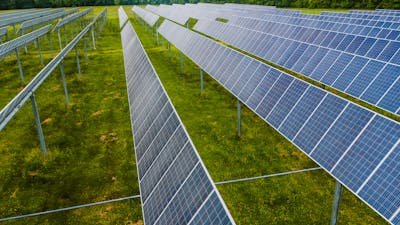Renewable energy is a crucial part of the global effort to reduce carbon emissions and combat climate change. With fossil fuels being a major contributor to global warming, renewable sources like solar, wind, hydro, and geothermal energy are becoming increasingly important. Technological advancements in renewable energy are making these sources more efficient, affordable, and accessible. Innovations in energy storage, grid management, and renewable energy production are key to ensuring a sustainable energy future.
Table: Key Renewable Energy Technologies
| Technology | Description |
|---|---|
| Solar Power | Conversion of sunlight into electricity |
| Wind Power | Use of wind turbines to generate electricity |
| Energy Storage | Advanced batteries for storing excess energy |
| Smart Grids | Efficient energy distribution and management |
Solar Power Advancements
Solar energy has seen significant technological improvements in recent years. Solar panels are becoming more efficient at converting sunlight into electricity, and costs have dropped dramatically, making solar power more accessible to both businesses and households. Innovations like solar photovoltaic (PV) cells and concentrated solar power (CSP) systems are increasing the output of solar energy, helping to provide cleaner electricity to a growing number of people worldwide.
Wind Energy Innovations
Wind energy is another major player in the renewable energy sector, and advancements in wind turbine technology are driving its growth. Modern wind turbines are more powerful and efficient than ever before, capable of generating large amounts of electricity even in areas with low wind speeds. Offshore wind farms are also expanding, taking advantage of the stronger and more consistent winds over the ocean to generate more renewable energy.
Energy Storage Breakthroughs
One of the biggest challenges in renewable energy is storage, as wind and solar power are not always available when needed. However, advancements in energy storage technologies, such as lithium-ion batteries and other next-generation storage systems, are helping solve this problem. These technologies allow excess energy generated during peak production times to be stored and used later, ensuring a stable supply of electricity even when renewable sources are not generating power.
Smart Grid Technology
Smart grids are revolutionizing the way electricity is distributed and managed. These advanced electrical grids use digital technology to monitor and manage the flow of electricity from power plants to consumers. They allow for better integration of renewable energy sources into the grid, reducing energy waste and improving efficiency. Smart grids can also help balance supply and demand, making renewable energy more reliable and accessible.
The Role of Government and Policy
Technological advancements alone are not enough to ensure the future of renewable energy. Government policies and incentives play a crucial role in promoting the adoption of renewable energy technologies. Investments in research and development, tax incentives for renewable energy projects, and regulations to reduce carbon emissions are all essential for driving the growth of renewable energy. Global cooperation and policy frameworks are necessary to create a sustainable energy system that benefits everyone.
Conclusion: A Sustainable Energy Future
Technological advancements in renewable energy are transforming the way the world generates and uses electricity. With innovations in solar and wind energy, energy storage, and smart grids, renewable energy is becoming more efficient and reliable. The continued development of these technologies, supported by government policies, will play a vital role in reducing carbon emissions and ensuring a sustainable future for generations to come.



